The Enigmatic, Highly Variable, High-Mass Young Stellar Object Mol 12: A New Extreme Herbig Be (Proto)star
Abstract
1. Introduction
2. Observations and Results
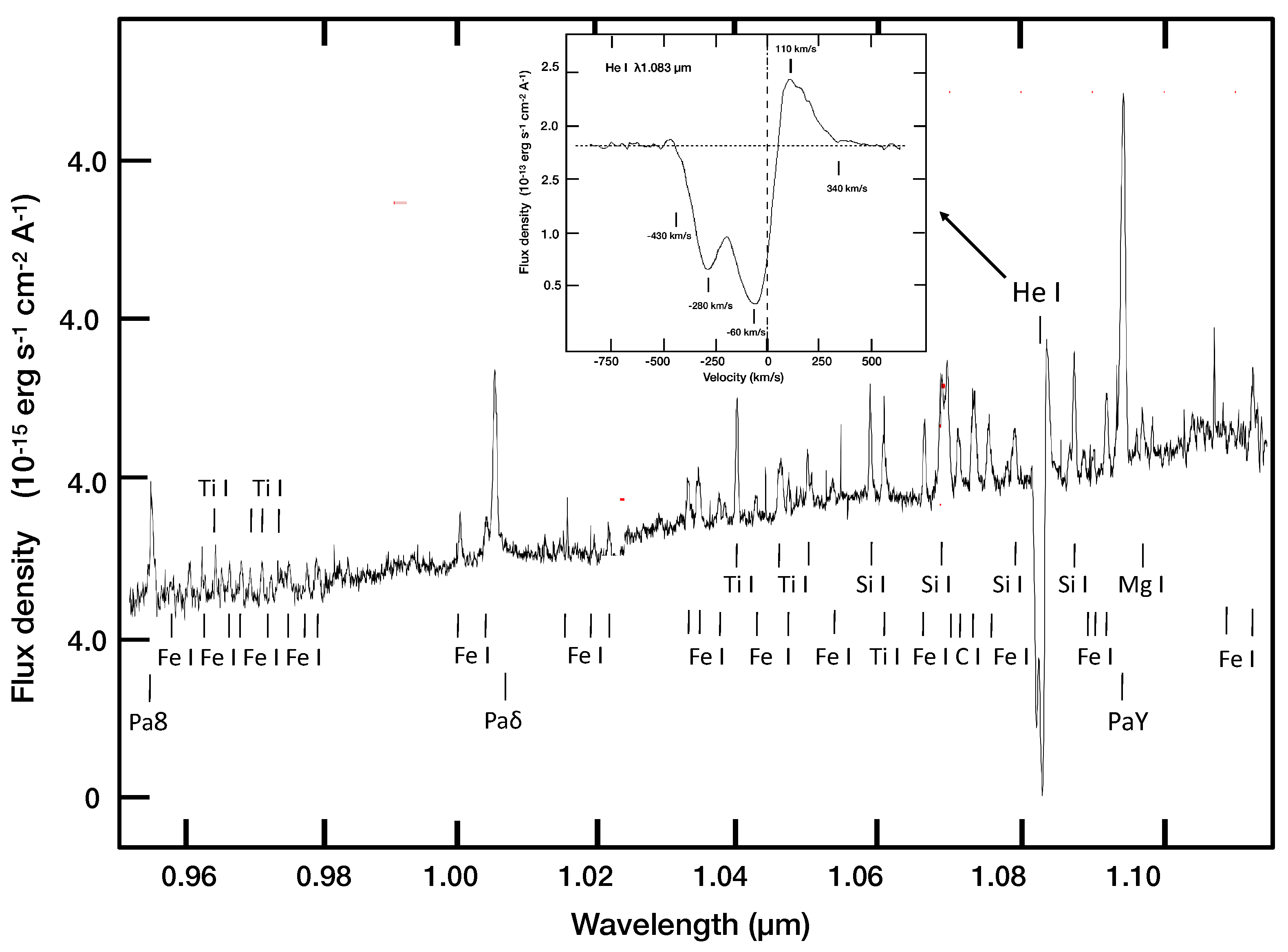
Author Contributions
Funding
Data Availability Statement
Conflicts of Interest
References
- Persi, P.; Tapia, M. Infrared imaging of high-mass young stellar objects: Evidence of multiple shocks and of a new protostar/star eclipsing system. Mon. Not. R. Astron. Soc. 2019, 485, 784–795. [Google Scholar] [CrossRef]
- Molinari, S.; Brand, J.; Cesaroni, R.; Palla, F.; Palumbo, G.G.C. A search for precursors of ultracompact H II regions in a sample of luminous IRAS sources. II. VLA observations. Astron. Astrophys. 1998, 336, 339–351. [Google Scholar]
- Choi, Y.K.; Hachisuka, K.; Reid, M.J.; Xu, Y.; Brunthaler, A.; Menten, K.M.; Dame, T.M. Trigonometric parallaxes of star forming regions in the Perseus spiral arm. Astrophys. J. 2014, 790, 99. [Google Scholar] [CrossRef]
- Molinari, S.; Brand, J.; Cesaroni, R.; Palla, F. A search for precursors of Ultracompact Hii regions in a sample of luminous IRAS sources. III. Circumstellar dust properties. Astron. Astrophys. 2000, 355, 617. [Google Scholar]
- Brown, G.M.; Johnston, K.G.; Hoare, M.G.; Lumsden, S.L. Connecting low- and high-mass star formation: The intermediate-mass protostar IRAS 05373+2349 VLA 2. Mon. Not. R. Astron. Soc. 2016, 463, 2839–2848. [Google Scholar] [CrossRef]
- Fairlamb, J.R.; Oudmaijer, R.D.; Mendigutía, I.; Ilee, J.D.; van den Ancker, M.E. A spectroscopic survey of Herbig Ae/Be stars with X-Shooter—II. Accretion diagnostic lines. Mon. Not. R. Astron. Soc. 2017, 464, 4721–4735. [Google Scholar] [CrossRef]
- Micolta, M.; Calvet, N.; Thanathibodee, T.; Magris, G.; Colmenares, M.J.; Díaz, J.V.; Alzate-Trujillo, J. The Ca II Lines as Tracers of Disk Structure in T Tauri Stars: The Chamaeleon I Region. Astrophys. J. 2023, 953, 177. [Google Scholar] [CrossRef]
- Tapia, M.; Hernández, J.; Persi, P.; Calvet, N. Mol 12A (IRAS 05373+2349): The most deeply embedded, massive Herbig Be star. 2025; in press. [Google Scholar]
- Butler, N.; Klein, C.; Fox, O.; Lotkin, G.; Bloom, J.; Prochaska, J.X.; Ramirez-Ruiz, E.; De Diego, J.A.; Georgiev, L.; González, J.; et al. First light with RATIR: An automated 6-band optical/NIR imaging camera. In Proceedings of the SPIE, Amsterdam, The Netherlands, 1–6 July 2012; Volume 8446, p. 844610. [Google Scholar]
- Watson, A.W.; Richer, M.G.; Bloom, J.S.; Butler, N.R.; Ceseña, U.; Clark, D.; Colorado, E.; Córdova, A.; Farah, A.; Fox-Machado, L.; et al. Automation of the OAN/SPM 1.5-meter Johnson telescope for operations with RATIR. In Proceedings of the SPIE, Amsterdam, The Netherlands, 1–6 July 2012; Volume 8444, p. 84445L. [Google Scholar]
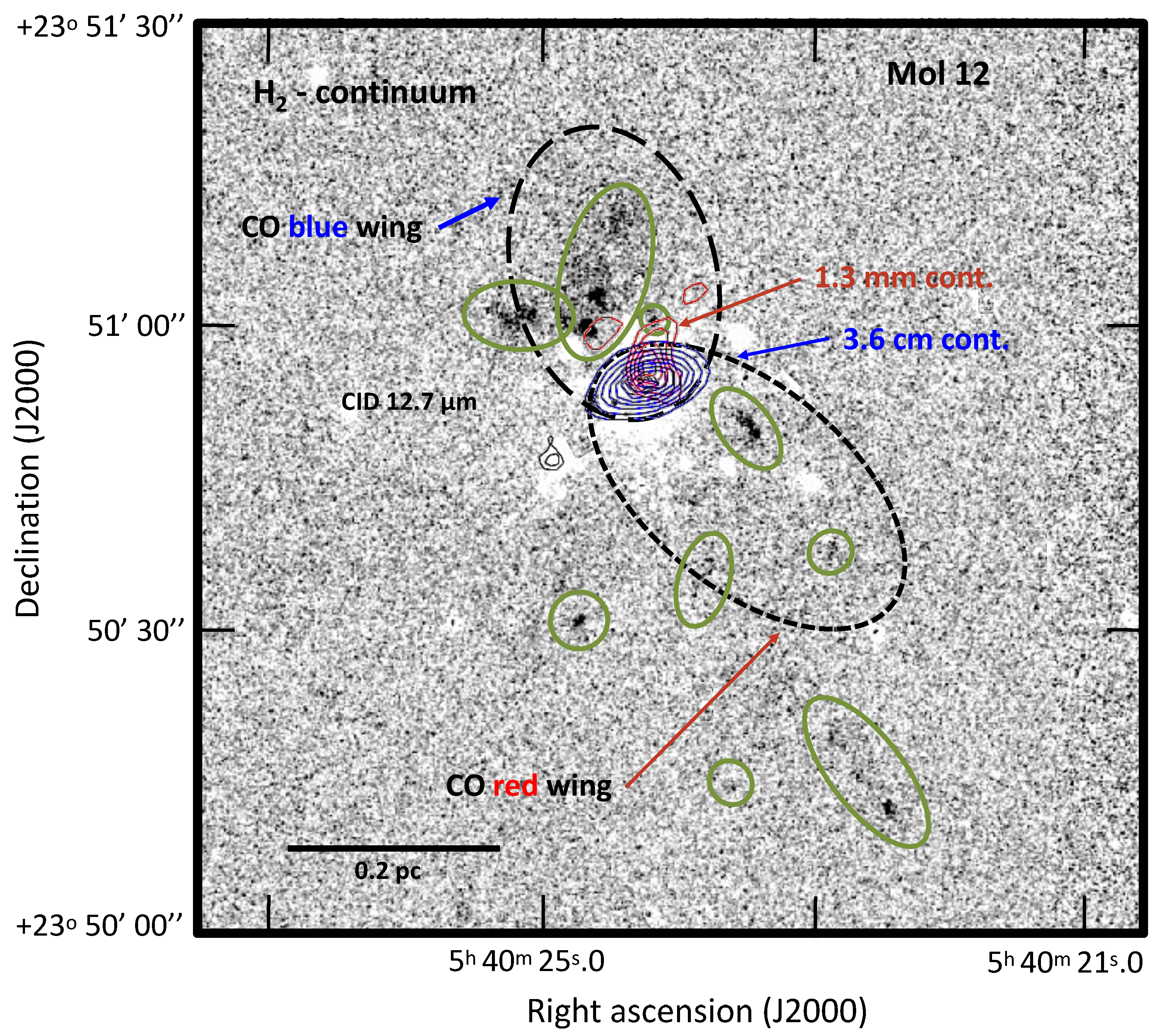
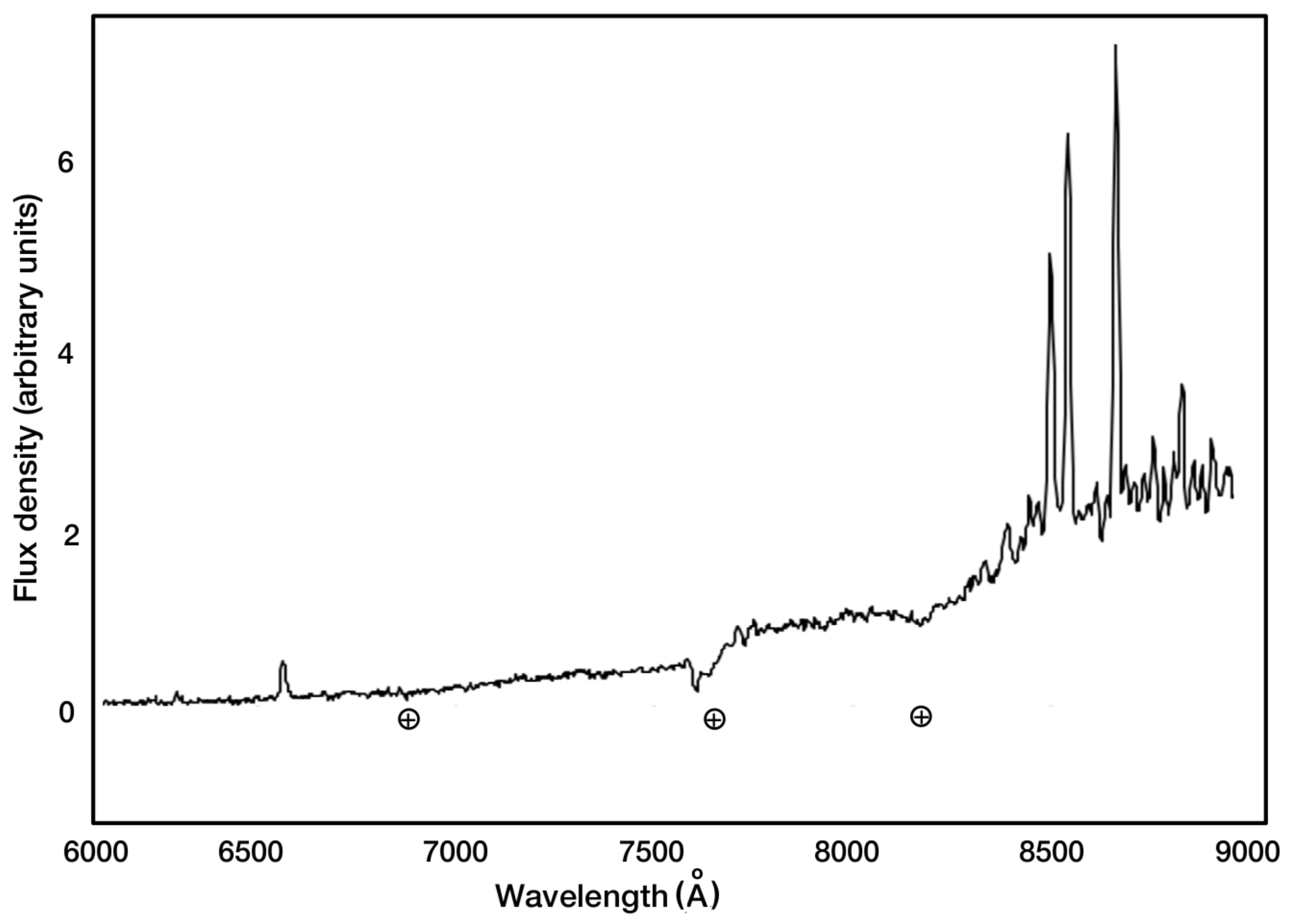
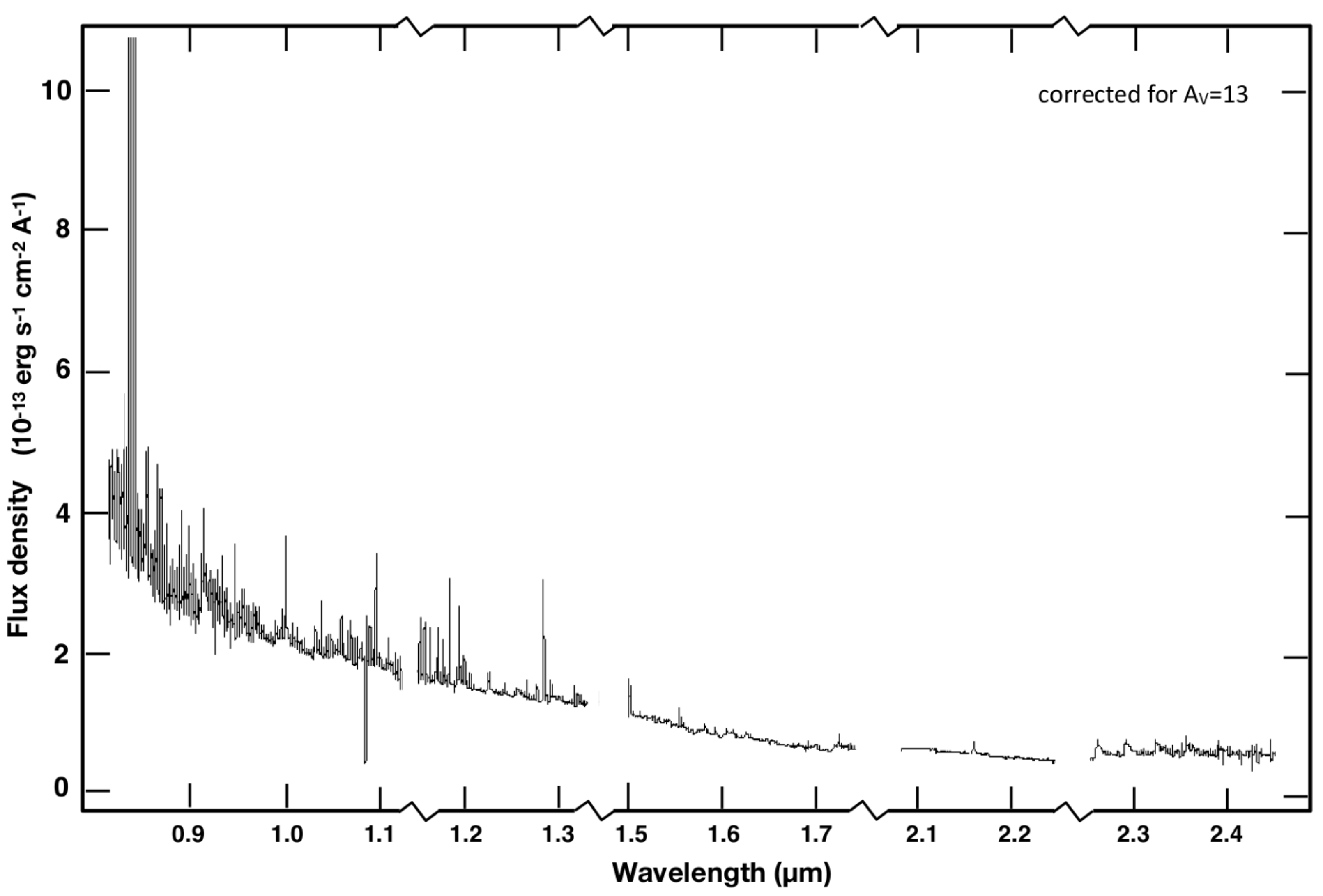
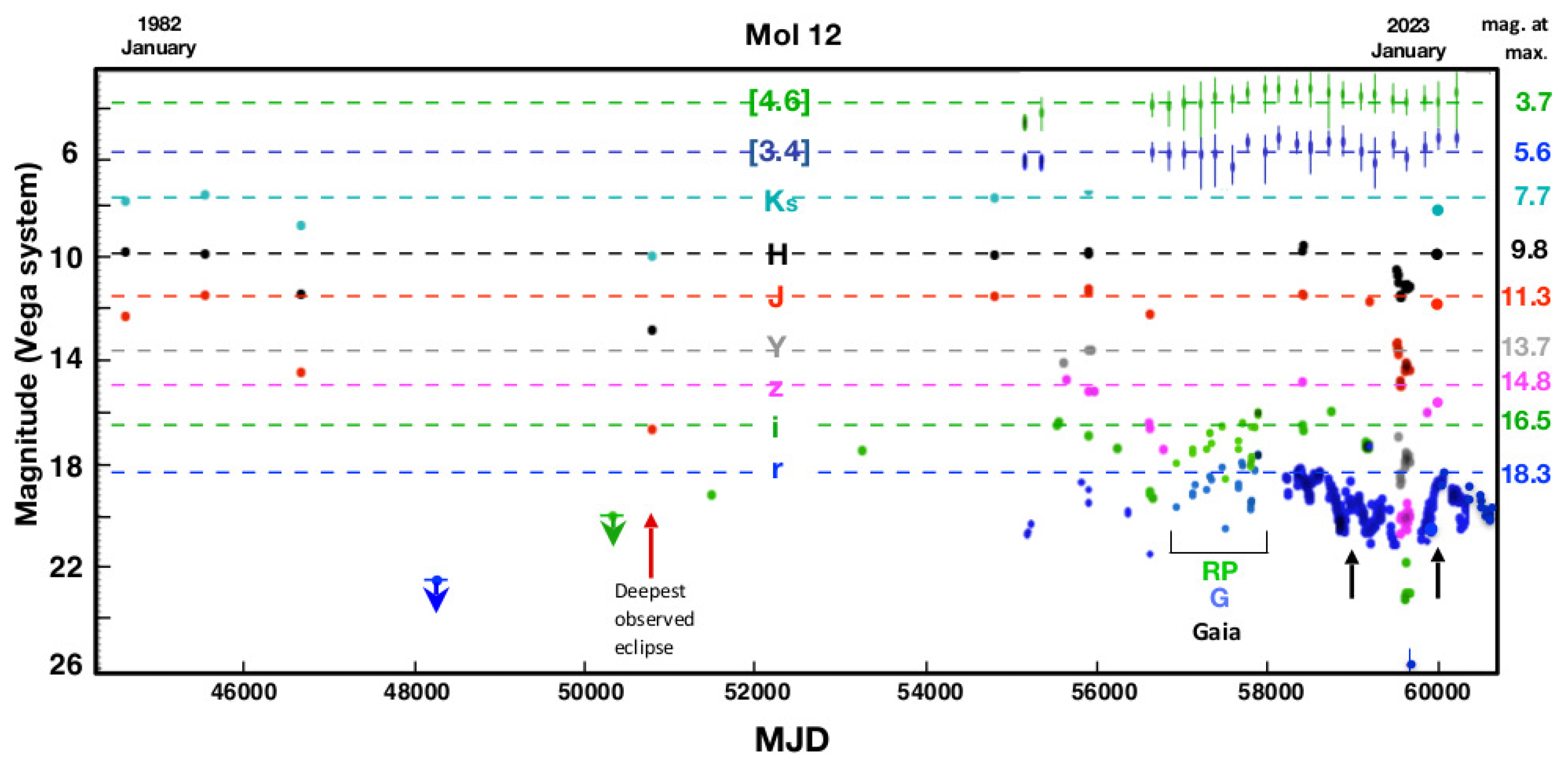
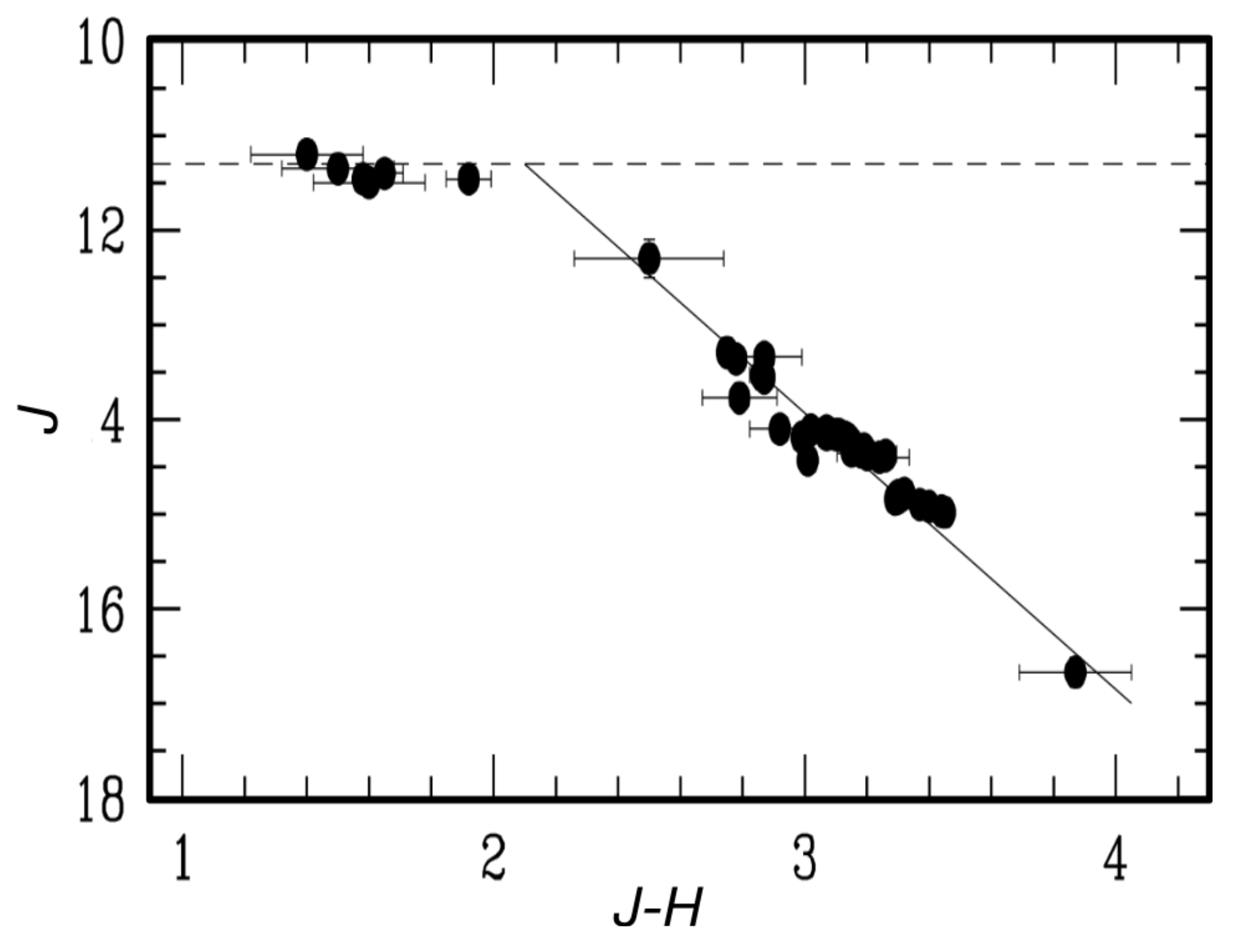
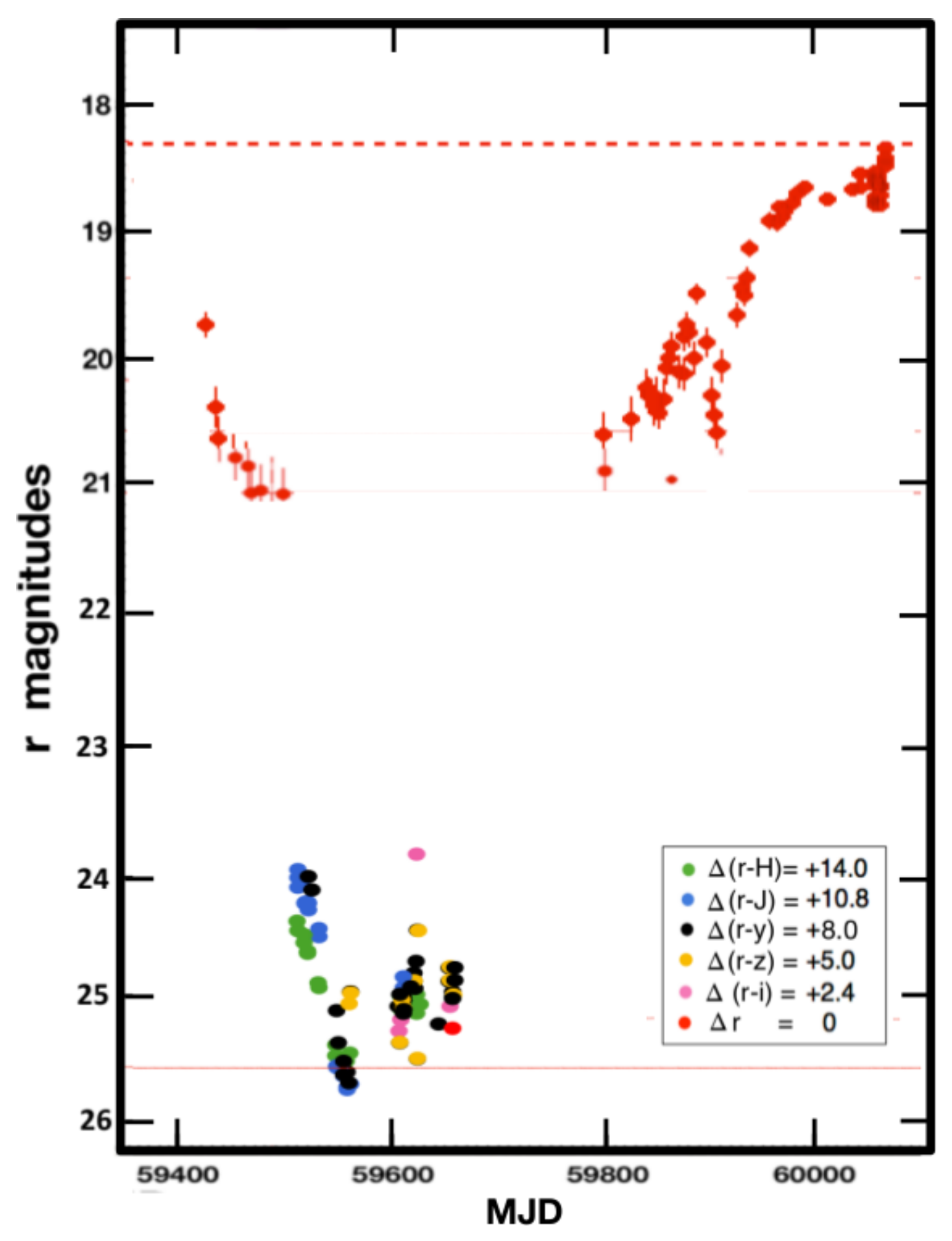
Disclaimer/Publisher’s Note: The statements, opinions and data contained in all publications are solely those of the individual author(s) and contributor(s) and not of MDPI and/or the editor(s). MDPI and/or the editor(s) disclaim responsibility for any injury to people or property resulting from any ideas, methods, instructions or products referred to in the content. |
© 2025 by the authors. Licensee MDPI, Basel, Switzerland. This article is an open access article distributed under the terms and conditions of the Creative Commons Attribution (CC BY) license (https://creativecommons.org/licenses/by/4.0/).
Share and Cite
Tapia, M.; Persi, P.; Hernández, J.; Calvet, N. The Enigmatic, Highly Variable, High-Mass Young Stellar Object Mol 12: A New Extreme Herbig Be (Proto)star. Galaxies 2025, 13, 70. https://doi.org/10.3390/galaxies13030070
Tapia M, Persi P, Hernández J, Calvet N. The Enigmatic, Highly Variable, High-Mass Young Stellar Object Mol 12: A New Extreme Herbig Be (Proto)star. Galaxies. 2025; 13(3):70. https://doi.org/10.3390/galaxies13030070
Chicago/Turabian StyleTapia, Mauricio, Paolo Persi, Jesús Hernández, and Nuria Calvet. 2025. "The Enigmatic, Highly Variable, High-Mass Young Stellar Object Mol 12: A New Extreme Herbig Be (Proto)star" Galaxies 13, no. 3: 70. https://doi.org/10.3390/galaxies13030070
APA StyleTapia, M., Persi, P., Hernández, J., & Calvet, N. (2025). The Enigmatic, Highly Variable, High-Mass Young Stellar Object Mol 12: A New Extreme Herbig Be (Proto)star. Galaxies, 13(3), 70. https://doi.org/10.3390/galaxies13030070





